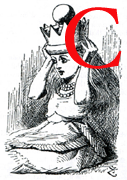 obbe's combination of “political intelligence,” class assumptions of entitlement, and her ability to draw upon networks of well-placed acquaintances made her effective campaigner for whatever cause she supported, whether workhouse reform, women's suffrage, or ant-vivisection. As Sally Mitchell points out, this political intelligence appears in her campaign for better management of workhouses when she combined proposed changes that would not cost taxpayers with “heartrending accounts of the suffering endured by blameless elderly women.” Understanding the need to present her message to wide audience, she made good use of people she knew. “Helped by acquaintances who could influence editors, she managed to have eighty-four articles and letters about the misery of workhouse
sick wards printed in fifty-four newspapers. Then she had the essay reprinted m
in a pamphlet that offered help from the Workhouse Visiting Society in car
rying out the scheme and sent all 666 Poor Law unions in the country” (114).
obbe's combination of “political intelligence,” class assumptions of entitlement, and her ability to draw upon networks of well-placed acquaintances made her effective campaigner for whatever cause she supported, whether workhouse reform, women's suffrage, or ant-vivisection. As Sally Mitchell points out, this political intelligence appears in her campaign for better management of workhouses when she combined proposed changes that would not cost taxpayers with “heartrending accounts of the suffering endured by blameless elderly women.” Understanding the need to present her message to wide audience, she made good use of people she knew. “Helped by acquaintances who could influence editors, she managed to have eighty-four articles and letters about the misery of workhouse
sick wards printed in fifty-four newspapers. Then she had the essay reprinted m
in a pamphlet that offered help from the Workhouse Visiting Society in car
rying out the scheme and sent all 666 Poor Law unions in the country” (114).
As one of the first women to support themselves by writing for newspapers, she relied on a similar approach to placing her work in a range of periodicals, each of which had its own target audience:
Like most journalists of the period, Cobbc learned how to sell her material in several markets. "Sculptors at Rome and the Great Exhibition," signed "F.P.C." and printed in the issue for 1 February 1862, was her first identifiable piece in the Spectator, where she continued to publish until the 1890s. Political unrest during the pre-Lenten carnival season made five reports for the Daily News, an article published in the Inquirer for 22 February with the signature "F.P.C.," one entitled "Why Romans Detest the Papacy. From an Occasional Correspondent" in the Spectator for 12 April, and "The Eternal City (in a temporary phase)" in Erasers for May. [122]
Bibliography
Mitchell, Sally Francis Power Cobbe: Victorian Feminist, Journalist, Reformer. Charlottesville and London: University of Virginia Press, 2004.
Last modified 7 July 2014